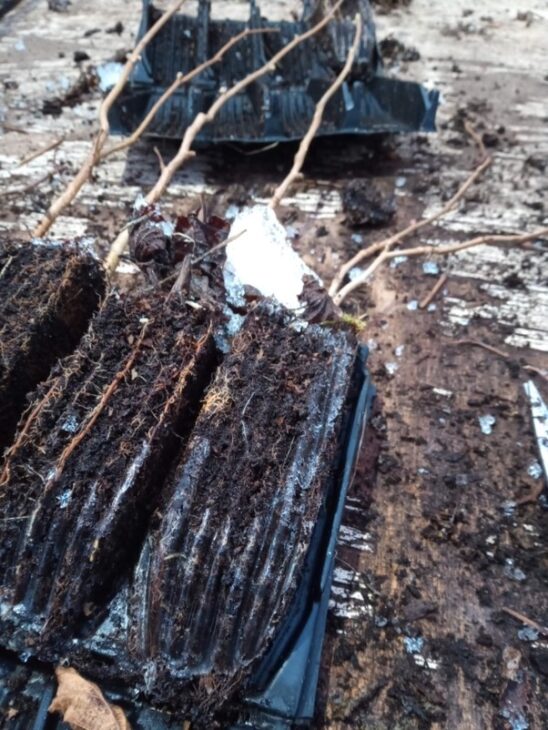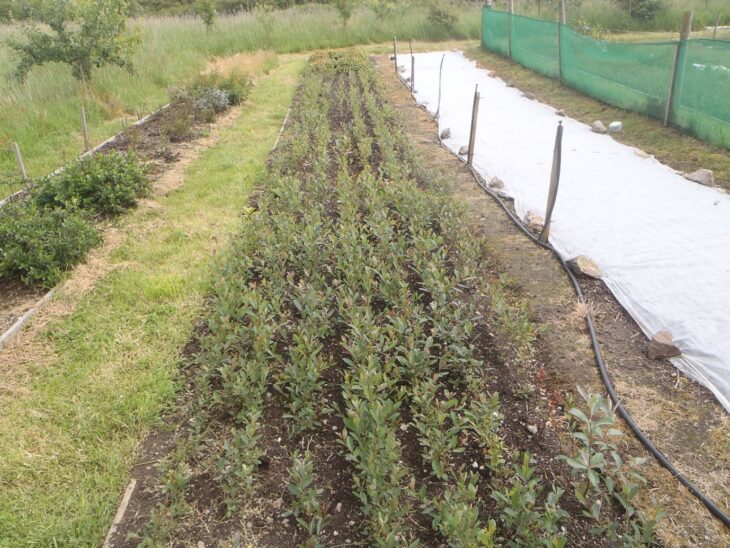Grading at Little Assynt Tree Nursery
In this next blog, part of this series, we hear again from Tree Nursery Assistant Josie Gibberd on another main task happening over the winter season at Little Assynt Tree Nursery which is grading.
At this time of year, there is one main task at hand in Little Assynt Tree Nursery, and that is grading. This is where we go through our entire stock for that year and sort out all the trees that are ready for sale, from those that haven’t survived, or need another season to grow big enough. The grading season starts towards the end of September and runs through until the end of winter.

It’s a relatively simple process, but a mammoth task. We currently sell about 60,000 trees every year and each of them has to pass through someone’s hands, to be sorted from the rest of the trees on site. Some trees might be tall enough, with most species we sell them at 20cm tall and above, but they may still be rejected if their roots have not grown enough to fill their cell, or they are very thin. Then we prune back any dead wood that might be present down to the next live bud- this helps the tree when the growing season comes, as the plant can lose water through evaporation in dead wood. This season, the icy weather has made grading a little tricky, with some of our cells frozen solid.
Once they’ve been sorted, graded trees are then bagged up, ready to be sent out to customers. For some species, the process is very quick and simple, for others it can take a bit of experience to spot a dead tree from a healthy one. For that reason, grading is a fantastic way to improve your winter tree ID. Young trees look very much like live twigs on an adult tree, so with thousands of them passing through your hands you quickly get the sense of what makes a tree an alder, and what makes it an oak.

If a tree does not quite make the grade it gets a second chance to put on height or fill out its roots. With trees grown in root-trainer cells, we will either pop the trees back in the cells and grow them on for another year, or line them out in rows in one of our outdoor beds. Plenty of trees that don’t get up to height in their first season are perfectly saleable the next year.

Find out more
Grading is one of those tasks where we massively appreciate our volunteers. Short, dark winter days are brightened up by friendly chatter and a brew at cup-of-tea time.
If you live locally, and would be interested in improving your winter tree ID (helping us grade!) you can get more information about volunteering by emailing Nick, on nclooney@coigach-assynt.org.
Little Assynt Tree Nursery is part of the Coigach and Assynt Living Landscape.
Nick Clooney, Tree Nursery Manager at Little Assynt Tree Nursery shares the benefits of local provenance trees grown from seed to help expand & connect fragmented woodland across the North West Highlands of Scotland in this interesting webinar. Watch at 20 mins.
Read our previous blogs from this series on:
Help protect Scotland’s wildlife
Our work to save Scotland’s wildlife is made possible thanks to the generosity of our members and supporters.
Join today from just £3 a month to help protect the species you love.
Preface
In this next blog, part of this series, we hear again from Tree Nursery Assistant Josie Gibberd on another main task happening over the winter season at Little Assynt Tree …
